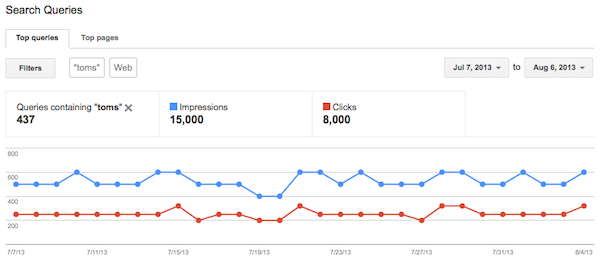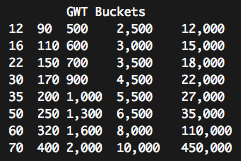
There is a widespread belief within the SEO industry that Google Webmaster Tools search query can be dismissed as worthless and inaccurate. This is wrong – an unfortunate example of how misinformation can steer people away from using a free, valuable tool.
That said, it’s understandable how people can reach these types of conclusions. After all, it takes some time to figure out exactly how Google displays the data and how to navigate around some of the pitfalls. It takes more than just a cursory glance to glean the true value of this data!
Here are some general items to keep in mind about Google Webmaster Tools search query data as you read this article.
- It’s generated from Google’s side of the fence. It includes “(not provided)” and all other referral data lost to secured search (Android, iOS 6), so +1 for more accuracy!
- Google masks data in the form of buckets. They round exact data into pre-determined numbers making the available data less accurate than it could be, so -1 for less accuracy!
- Limited to the top 2,000 keywords the site received clicks for. Stay tuned for a secret fix.
‘(Not Provided)’ and Secure Search Referral Data
This is all included in GWT search query data! A big deal when considering that many sites see “(not provided)” as their highest referring keyword.
In an oddly similar worded article written back in March of 2012, I showed how it was possible with careful segmentation of Google Analytics and GWT data, to recover “(not provided)” data. An example of how it is possible to gain granular insight from search query data, despite what many people currently perceive.
GWT Clicks vs. Analytics Visits
Especially when comparing GWT numbers with other analytics platforms, it’s important to take everything into consideration to avoid seeing vast differences:
- There’s generally a 2-3 day lag in GWT data.
- When comparing GWT numbers to analytics numbers, consider variables like time zone, mobile, image, video, etc. Be sure to filter everything out before comparing GWT clicks with analytics visits.
- Google gets data upon users clicking your listing in search results. Most analytics depend on the execution of JavaScript tagging and there is probably a small percent of users who click through to a site then bounce before tracking has fired.
- Google mentions the possibility of bots (crawlers) occasionally (rarely) negatively affecting the accuracy of numbers.
- Always be sure to check comparison dates are the same.
Google Webmaster Tools pioneer Vanessa Fox summed it up well when she stated, “…we’re looking at historical trends for traffic, not replacing web analytics programs…“.
Bucketed Display
Below is a list of how Google seems to be displaying bucketed numbers, they just round to the closest number. So if a listing were to get 451 clicks, that would be displayed as having 500 clicks.

To neutralize the obvious inaccuracy of the bucketed numbers, trend the data over time. When the data is downloaded every day, it exposes the fluctuation of the bucketed search data giving insight to a more approximate average over time. As you can see the larger the number the bigger the bucket becomes, adding to the importance of grabbing search data daily to get the lowest numbers possible.
Between eliminating the margin of error when data is trended over time and the accuracy gained by “(not provided)” and other lost or mislabeled secured search referral data loss, there really is value to had here.
Data Limitations
Google documentation mentions, “Webmaster Tools shows data for the top 2,000 queries that returned your site at least once or twice in search results in the selected period.”
For most sites this is a comprehensive look at search result presence. For others it is not enough, but it’s possible to separately verify subfolders in GWT. By doing this you can get search query data specific to that subfolder or category. (There’s the secret fix I promised.)
Identify Trends
It is easy to point out the most advantageous aspect of GWT search query data. By creating categories of keywords, you can track seasonality (impressions) on the same graph as average ranking, click-through rate (CTR), and number of clicks.
Imagine a scenario where you have all referring keywords for all products / articles / similar pages in categories and a complete and immediate understanding of whether a decrease in traffic can be attributed to a drop in ranking, CTR, or simply less search.
Conclusion
With more companies and products using Google Webmaster Tool search query data, and Googlers Maile Ohye and John Mueller vouching for the accuracy of the numbers, it’s a shame so many people have dismissed free insight as invalid. Don’t be one of them! Downloading, categorizing, and trending over time is the best way to get the most out of what Google is giving us.

